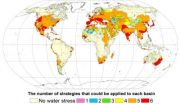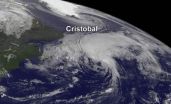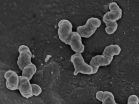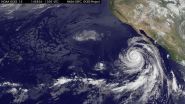(Press-News.org) Researchers at the Washington University School of Medicine have identified one way the Ebola virus dodges the body's antiviral defenses, providing important insight that could lead to new therapies, in research results published in the journal Cell Host & Microbe.
In work performed at Beamline 19ID at Argonne National Laboratory's Advanced Photon Source, the researchers developed a detailed map of how a non-pathogenic Ebola protein, VP24, binds to a host protein that takes signaling molecules in and out of the cell nucleus.
Their map revealed that the viral protein takes away the host protein's ability to carry an important immune signal into the nucleus. This signal helps activate the immune system's antiviral defenses, and blocking it is believed to contribute significantly to the virus's deadliness.
INFORMATION: END
Study reveals how Ebola blocks immune system
2014-08-29
ELSE PRESS RELEASES FROM THIS DATE:
Argonne scientists pioneer strategy for creating new materials
2014-08-29
Making something new is never easy. Scientists constantly theorize about new materials, but when the material is manufactured it doesn't always work as expected. To create a new strategy for designing materials, scientists at the Department of Energy's Argonne National Laboratory combined two different approaches at two different facilities to synthesize new materials.
This new strategy gives faster feedback on what growth schemes are best, thus shortening the timeframe to manufacture a new, stable material for energy transport and conversion applications.
A recent ...
Aging Africa
2014-08-29
Boulder, Colorado, USA – In the September issue of GSA Today, Paul Bierman of the University of Vermont–Burlington and colleagues present a cosmogenic view of erosion, relief generation, and the age of faulting in southernmost Africa. By measuring beryllium-10 (10Be) in river sediment samples, they show that south-central South Africa is eroding at the slow rate of about five meters per million years, consistent with rates in other non-tectonically active regions.
By measuring 10Be and aluminum-26 (26Al) in exposed quartzites, Bierman and colleagues find that undeformed ...
Preventing cancer from forming 'tentacles' stops dangerous spread
2014-08-29
EDMONTON, AB – A new study from the research group of Dr. John Lewis at the University of Alberta (Edmonton, AB) and the Lawson Health Research Institute (London, ON) has confirmed that "invadopodia" play a key role in the spread of cancer. The study, published in Cell Reports, shows preventing these tentacle-like structures from forming can stop the spread of cancer entirely.
Roughly 2 in 5 Canadians will develop cancer in their lifetime, and one in four of them will die of the disease. In 2014, it's estimated that nine Canadians will die of cancer every hour. Thanks ...
Reducing water scarcity possible by 2050
2014-08-29
Water scarcity is not a problem just for the developing world. In California, legislators are currently proposing a $7.5 billion emergency water plan to their voters; and U.S. federal officials last year warned residents of Arizona and Nevada that they could face cuts in Colorado River water deliveries in 2016.
Irrigation techniques, industrial and residential habits combined with climate change lie at the root of the problem. But despite what appears to be an insurmountable problem, according to researchers from McGill and Utrecht University it is possible to turn the ...
Evidence mounting that older adults who volunteer are happier, healthier
2014-08-29
Toronto, Canada – Older adults who stay active by volunteering are getting more out of it than just an altruistic feeling – they are receiving a health boost!
A new study, led by the Rotman Research Institute at Baycrest Health Sciences and published online this week in Psychological Bulletin, is the first to take a broad-brush look at all the available peer-reviewed evidence regarding the psychosocial health benefits of formal volunteering for older adults.
Lead investigator Dr. Nicole Anderson, together with scientists from Canadian and American academic centres, ...
NASA sees Hurricane Cristobal racing through North Atlantic
2014-08-29
Satellite imagery shows Hurricane Cristobal racing through the North Atlantic on Friday, August 29 while losing its tropical characteristics. An image from NOAA's GOES-East satellite showed Cristobal headed south of Greenland. The previous day, NASA's TRMM satellite saw heavy rainfall occurring in the hurricane.
In a visible image from NOAA's GOES-East satellite on August 29 at 7:45 a.m. EDT, Hurricane Cristobal was moving through the North Atlantic about 500 miles southwest of Greenland. The image was created by the NASA/NOAA GOES Project at NASA's Goddard Space Flight ...
CCNY team defines new biodiversity metric
2014-08-29
To understand how the repeated climatic shifts over the last 120,000 years may have influenced today's patterns of genetic diversity, a team of researchers led by City College of New York biologist Dr. Ana Carnaval developed a new biodiversity metric called "phylogeographic endemism."
It quantifies the degree to which the genetic variation within species is restricted in geographical space.
Dr. Carnaval, an assistant professor of biology, and 14 other researchers from institutions in Brazil, Australia and the United States, analyzed the effects of current and past climatic ...
Hydrogen powers important nitrogen-transforming bacteria
2014-08-29
This news release is available in German. Nitrite-oxidizing bacteria are key players in the natural nitrogen cycle on Earth and in biological wastewater treatment plants. For decades, these specialist bacteria were thought to depend on nitrite as their source of energy. An international team of scientists led by Holger Daims, a microbiologist at the University of Vienna, has now shown that nitrite-oxidizing bacteria can use hydrogen as an alternative source of energy. The oxidation of hydrogen with oxygen enables their growth independent of nitrite and a lifestyle outside ...
NASA animation shows Hurricane Marie winding down
2014-08-29
VIDEO:
This video of NOAA's GOES-West satellite imagery from Aug. 26-29 shows Hurricane Marie winding down into a post-tropical storm.
Click here for more information.
NOAA's GOES-West satellite keeps a continuous eye on the Eastern Pacific and has been covering Hurricane Marie since birth. NASA's GOES Project uses NOAA data and creates animations and did so to show the end of Hurricane Marie.
At 5 a.m. EDT (0900 UTC) on Friday, August 29, Marie became a post-tropical storm ...
'Face time' for the heart diagnoses cardiac disease
2014-08-29
To the careful observer, a person's face has long provided insight into what is going on beneath the surface. Now, with the assistance of a web camera and software algorithms, the face can also reveal whether or not an individual is experiencing atrial fibrillation, a treatable but potentially dangerous heart condition.
A pilot project, the results of which were published online today in the journal Heart Rhythm, demonstrates that subtle changes in skin color can be used to detect the uneven blood flow caused by atrial fibrillation. The technology was developed in a ...




